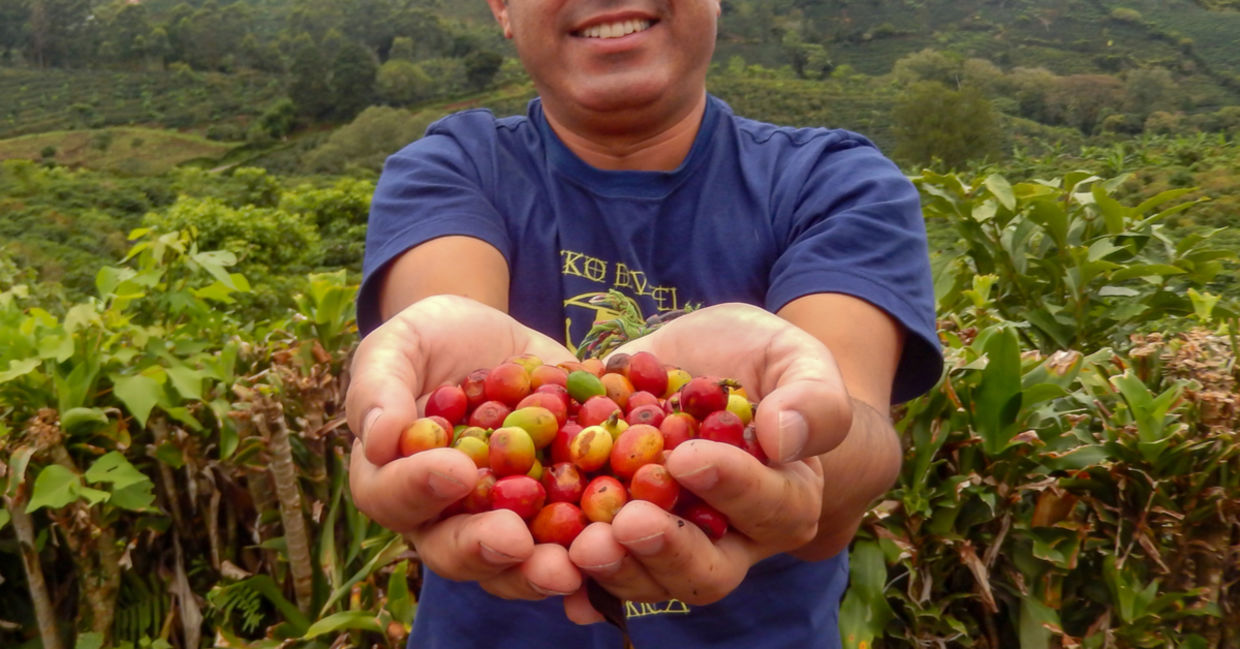
(Bilal Kocabas / Shutterstock.com)
There’s nothing better than a cup of coffee in the morning. Coffee is surprisingly good for more than just caffeination, and believe it or not, Mother Nature herself may also be boosted from a rich cuppa java.
According to a new study, published in the Ecological Solutions and Evidence journal by Dr. Rebecca Cole and Dr. Rakan Zahawi from the University of Manoa in Hawai’i, researchers have discovered that forests like caffeine too! Coffee pulp has the power to restore deforested land, becoming a win-win for coffee production and forest restoration across the globe.
They took two plots of deforested land in southern Costa Rica that were covered with thick and strong non-native pasture grasses, according to the British Ecological Society. Both plots measured 98 by 130 feet. They dumped 30 truckloads of coffee pulp onto one area, ensuring the pulp was about 18 inches thick. The other area lay untended.
They quickly observed that the coffee pulp smothered the grass and became hot, acting like a thick compost. Carbon, nitrogen, and phosphorus from the coffee pulp enriched the soil and within two years, native pioneer tree species were growing. The rich soil attracted insects, which then gathered birds. As the birds dropped seeds onto the nutrient-dense soil, the seeds sprouted and grew into trees.
Researchers observed that the coffee-enriched plot became 80 percent covered by young tree canopy, according to National Geographic, and some were already 15 feet tall! These young trees could one day grow as tall as 60 feet high. The invasive grasses were gone. Overall, it had experienced four times as much growth as the untended plot, which only had just 20 percent growth after two years.
“It takes tropical forest hundreds of years to grow back. To have [such] tall trees in only two years is really spectacular,” Cole told National Geographic. “This really was like a forest on caffeine. I think it’s really promising,” she added.
This is also promising on a global level. With the Paris Accords and the Bonn Challenge addressing climate change and deforestation, this presents an inexpensive way to restore large deforested areas, according to the study. And with coffee being grown in over 60 countries, the pulp is readily available worldwide.
Forests on caffeine: coffee pulp, a waste product of coffee production, could be used to speed up tropical forest recovery on post agricultural land. @AER_ESE_BES research in @WildlifeMaghttps://t.co/2mbqOmixaR
— British Ecological Society (@BritishEcolSoc) March 30, 2021
In fact, according to the study, when processing coffee beans, around 50 percent of the coffee fruit is discarded, including the skin, pulp, and mucilage. This results in a staggering 218,400 tons of fresh pulp thrown away for every million bags of dried coffee produced.
The researchers hope to broaden their study using other fruit peels to restore degraded soil. It is already known that orange peels continue to elevate soil nutrient levels in Costa Rica some 16 years after being added, according to the study.
“We hope our study is a jumping off point for other researchers and industries, to take a look at how they might make their production more efficient by creating links to the global restoration movement,” Cole told the British Ecological Society.
The next time you sit cradling your steaming coffee, you may have a renewed appreciation about its powerful effects, because coffee may make anything possible!
YOU MIGHT ALSO LIKE:
How to Compost in Your Backyard
India Planted 50 Million Trees in One Day to Save the Climate
5 Paris Agreement All-Stars to Watch







